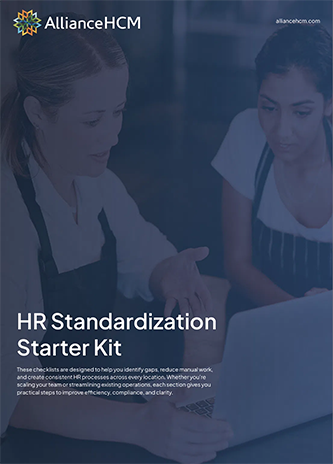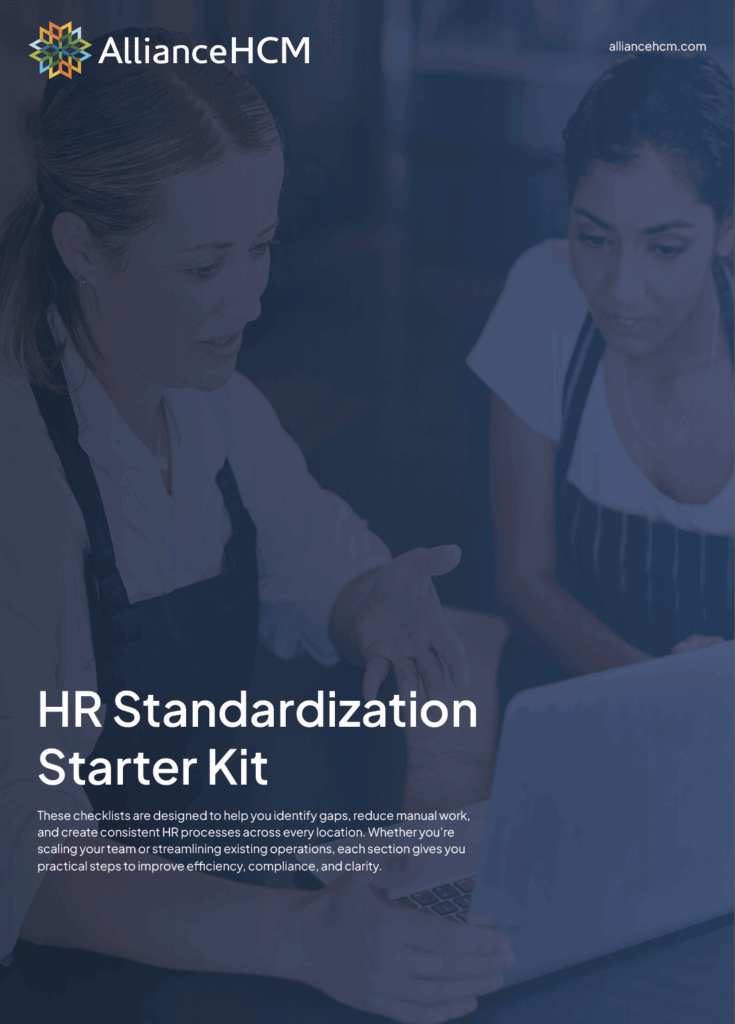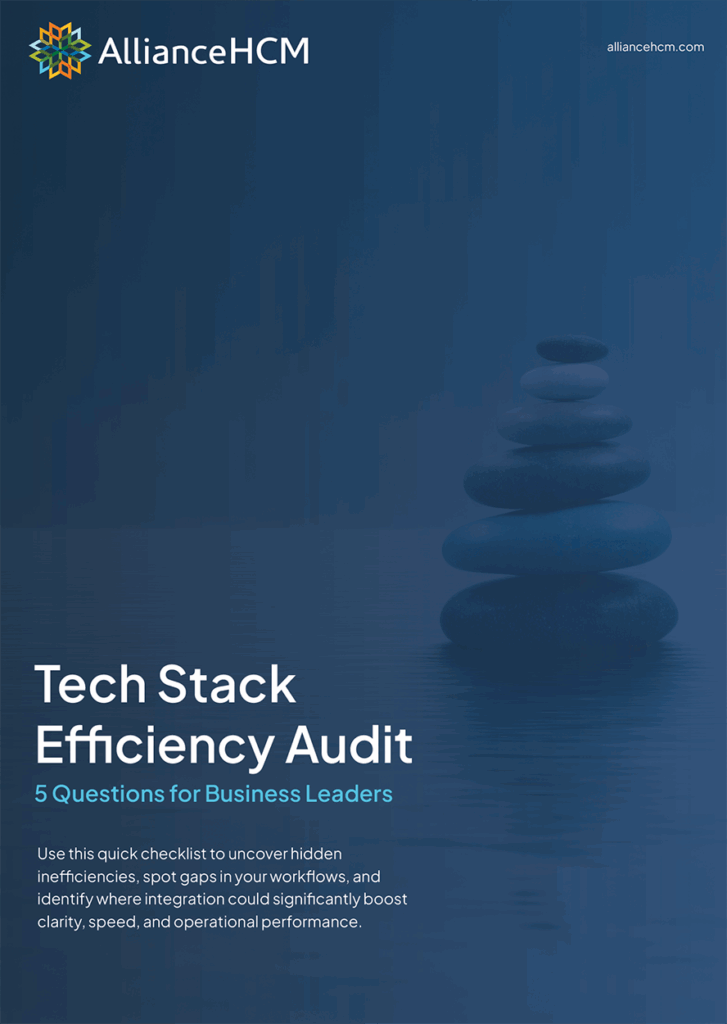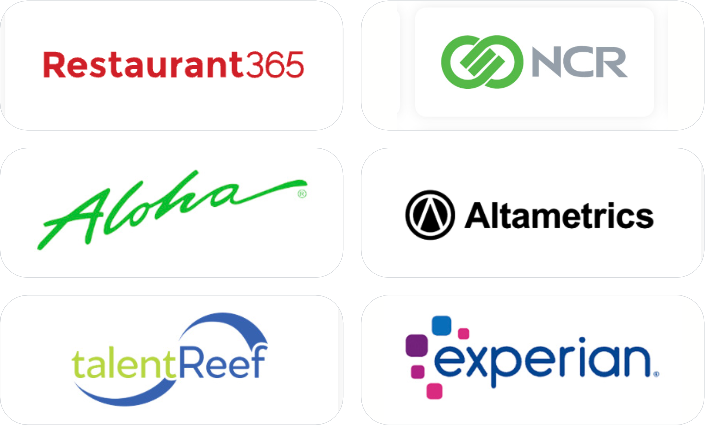The National Labor Relations Board (NLRB) has released a new final rule to clarify what it means to be a joint employer under the National Labor Relations Act (NLRA). Basically, this rule spells out when two or more businesses are considered joint employers, sharing the responsibilities for labor violations and employee negotiations. This change could significantly impact franchise and contract companies, as they need to think about fresh perspectives on payroll and staying compliant.
Key Takeaways
- Broadened Definition of Joint Employment: The NLRB’s new rule expands the criteria for joint-employer status, emphasizing both direct and indirect control over employment terms.
- Liabilities for Franchisors and Contractors: Businesses involved in staffing, contracting, or franchising face greater legal responsibilities for labor violations and collective bargaining obligations.
- March 2024 Compliance Deadline: The rule takes effect on March 11, 2024, requiring businesses to reassess contracts and employment practices before this date.
- Operational and Legal Implications: Employers must adjust operational strategies and seek legal guidance to navigate potential liabilities under the new framework.
- Proactive Compliance is Key: Updating policies, reviewing contracts, and consulting with labor law experts can help mitigate risks and ensure adherence to the revised standards.
Decoding the NLRB’s Joint-Employer Rule
The National Labor Relations Board (NLRB) has revamped how joint-employer status is determined under the National Labor Relations Act (NLRA), making this a critical consideration for any business entity involved in multifaceted employment arrangements. So, what exactly does the new rule entail? Let’s dive in.
This rule, issued in October 2023, broadens the scope of what constitutes a joint-employer relationship. Historically, this determination was somewhat narrow, focusing primarily on direct control over employees’ essential terms and conditions of employment. However, the new rule expands this definition by emphasizing both direct and indirect control elements.
Indirect Control: What Does It Mean? With the updated framework, businesses can now be deemed joint employers even if they only have the potential to exert indirect control over workers. This shift means that if a company has the ability, but not the authority, to affect working conditions such as scheduling, hiring practices, or wage determination—even if it chooses not to act on it—it may still be held accountable as a joint employer.
This broader interpretation ensures that more entities could potentially share liability for labor law violations or collective bargaining duties, thus impacting how businesses navigate their contractual and operational strategies. Especially in industries like franchising or contracting, where layered employment relationships are prevalent, this expanded rule marks a significant shift.
The Implications for Employers if you’re part of a franchise or work with contractors, the implications of this rule can’t be understated. Businesses need to reevaluate their agreements and operational structures to safeguard against unintentional legal entanglements. Consider consulting with legal experts who specialize in labor laws to assess potential risk areas comprehensively.
Ultimately, understanding the full breadth and impact of the NLRB’s joint-employer rule is crucial for every business. By staying informed and proactive, companies can better navigate the complexities of labor relations in today’s evolving regulatory landscape.
Key Changes in the NLRB’s Final Rule
One of the most significant changes in the NLRB’s final rule is the shift from requiring direct and immediate control to merely allowing for indirect and reserved control. This alteration broadens the scope of what can be considered a joint-employer relationship. For employers, this implies that more entities could now be held accountable for labor violations or required to participate in collective bargaining, even if their control over employment terms is not exercised directly.
The new rule is set to take effect on March 11, 2024, and presents a profound transformation of existing standards, potentially exposing more businesses to liabilities. Companies, especially within the franchises and contract sectors, must now reassess their policies and agreements to ensure compliance under this expanded framework.
The rule’s implementation is seen as a move by the NLRB to aggressively reshape labor practices, aligning with its broader agenda to revise past precedents. Employers should take an active role in understanding the new expectations and prepare for their implications on daily operations and long-term strategies.
This proactive approach can safeguard businesses against unexpected legal challenges and ensure that they are prepared for the changes ahead. Adjustments may include reevaluating contracts and exploring training programs to educate management and frontline workers about the new responsibilities stemming from the joint-employer status.
Who is Affected by the New Rule?
Primarily, the rule is set to influence businesses that rely on staffing agencies, contractors, and subcontractors. If you operate within industries like retail, healthcare, or construction, this change could mean a significant shift in how you view and manage these relationships. The new definition of joint-employer status may lead to increased oversight and responsibilities, challenging the flexibility you might have previously enjoyed.
The rule also affects franchise operations. As a franchisee or franchisor, the new rule might redefine your liabilities and responsibilities, potentially reshaping your business model. Concerns are rising over increased liabilities and the potential requirement to engage in collective bargaining—a significant consideration if you’re in a union environment.
Starting on March 11, 2024, these changes will be in full effect for cases filed post this date. It’s crucial to understand this timeline and how it aligns with your current agreements and operational strategies. Beyond franchises, employers utilizing temporary workers or third-party services should prepare for the implications, both legally and operationally.
It’s advisable to consult with labor counsel to navigate this new landscape effectively. By doing so, you can better prepare for the compliance demands and explore how to maintain operational efficiencies while adhering to the revised rule.
Avoiding Pitfalls: Compliance Tips for Businesses
To successfully navigate the nuances of the new rule, your business must take a proactive approach, especially when dealing with employment relationships and contracts. Here are some insightful tips to help you mitigate risks and remain compliant:
- Review Employment Contracts: Thoroughly assess your current agreements with staffing agencies and independent contractors. Ensure that these documents reflect a clear understanding of indirect control over the work conditions, tasks, and responsibilities.
- Update Commercial Agreements: It’s essential to regularly evaluate your commercial contracts to effectively manage control and risk allocation. You should particularly focus on areas concerning safety standards and compliance.
- Implement Clarity in Policies: Work on structuring precise, unambiguous policies that define your company’s roles and the boundaries of worker management. Counsel’s advice is invaluable here to curb unnecessary dominance over working conditions.
- Consult Legal Experts: Regular consultations with a legal advisor can provide insights on potential reforms to align your practices with the new rules. Seek guidance on composing policies for interactions with third-party workers and vendors.
- Exercise Caution with Third Parties: When dealing with third-party workers or vendors, avoid dictating their methods of work or specific reasons for discipline. This helps to reduce contentious points that could lead to a joint-employer determination.
By keeping these strategies in mind, you’ll not only protect your business from potential liabilities but also ensure a robust framework that supports both compliance and operational efficiency. Remember that staying informed and agile in this evolving landscape is key to your company’s sustained success.
FAQs on the New Joint-Employer Rule
- What is a joint-employer relationship?
A joint-employer relationship occurs when two or more businesses share control over essential terms and conditions of employment, such as hiring, wages, or supervision. Under the new rule, both can be held accountable for labor violations. - How does the new rule affect businesses that use staffing agencies?
Employers engaging staffing agencies might find themselves classified as joint employers more easily. This means additional liabilities and responsibilities in ensuring fair labor practices are upheld across all associated workers. - Why was the rule updated in 2023?
The 2023 update seeks to expand the criteria for joint-employer status, aiming to protect workers’ rights in increasingly complex employment structures involving multiple parties. - Do franchisors need to worry about joint-employer status?
Yes, franchisors should review their involvement in franchisee employment practices. The rule might implicate them as joint employers, necessitating adjustments to compliance strategies and policies. - What should businesses do to comply with the new rule?
Businesses ought to revisit their labor contracts and management practices with third-party workers to ensure they align with the expanded joint-employer standards. Consulting with a labor attorney could also be beneficial.
Understanding the nuances of the NLRB’s joint-employer rule is vital for businesses navigating today’s multifaceted employment landscape. As you digest the changes to the rule, it’s crucial to assess current business practices and relationships, especially if your operations involve staffing agencies or franchises. These steps not only help protect workers’ rights but also shield your enterprise from unforeseen liabilities. Engaging with labor experts can provide further clarity and ensure you remain compliant in this evolving regulatory environment. Embrace this opportunity to strengthen your labor engagements, ensuring they are equitable and transparent for all stakeholders involved.





